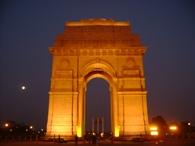 The time may have come for India to stop thinking of five-year plans, and to focus instead on 10-and 20-year scenarios, says T N Ninan.
The time may have come for India to stop thinking of five-year plans, and to focus instead on 10-and 20-year scenarios, says T N Ninan.
Long-term scenario-building achieved a new level of popular awareness when Goldman Sachs came out with its Brics report, in 2003 - positing that India and China would become two of the three largest economies in the world in the space of roughly one generation.
Since that eye-popping statement, the story about the rising economies, and of shifting power balances, has become the stuff of everyday journalism. But, as yet, most people are only dimly aware of what transformational change will come to mean.
The future can be imagined by looking at the neighbourhood. If India's income per head doubles in the coming decade, the average Indian will be where the Filipino is today.
If it doubles again, as it ought to by about 2030, we should look at the Thai standard of living today to understand what an evolving Indian reality might represent. Not very exciting? You bet it will be, because of the difference in scale - by 2030 India will have 1.5 billion people, and the Indian economy will be perhaps 30 per cent to 50 per cent bigger than China's is today.
Almost axiomatically, some markets would have multiplied 10-fold. If 350 million people constitute the consumer set today, imagine the scale of shopping when two-and-a-half times that number can spend up to four times more per head. Or, think of a basic material like cement - for which China has a production capacity of 1.75 billion tonnes, about eight times India's.
The story has been and will be about scale change. Recall that in 1991 the total Ambani family wealth was no more than Rs 5,000 crore (Rs 50 billion) ; today, the two brothers account between them for Rs 250,000 crore (Rs 2,500 billion).
Software services, a $50 billion business now, were not even $1 billion in 1991. If you want to see how quickly the future obliterates the past, recall that in 1991 Ratan Tata was about to launch bruising battles with Russi Mody and Ajit Kerkar.
In a rapidly transforming economy, the future will once again shrink today's present once it is viewed through the rear-view mirror. The winners will be the ones who think further ahead. But if the country as a whole has to be a winner, then systemic scenario-building has to be a serious exercise involving the broadest possible participation.
Consider the possible scale of our cities. From two cities with 10-million plus population, we could get to 20 such. What will they need in terms of public transport, water supply and sewage treatment, green buildings, and proper urban laws for effective governance? Are we getting ready?
Think inter-city transport, and of fast trains that should take you from Delhi to Mumbai in no more than 10 hours. Is Mamata Banerjee getting ready? With power generation likely to quadruple, and the car population multiplying seven- or eight-fold, think of air quality in what could be among the most polluted cities in the world.
The short point is that the future will get here faster than we think. If an economy growing at 6 per cent reaches a certain size in 20 years, one that is growing at 8 per cent gets there five years sooner - and will be 50 per cent bigger at the end of the 20 years.
So we can't afford to take 10 years to build a 5 km sea-link, as we just did in Mumbai. What is needed is a change of gears. And the only way to do that is to map possible scenarios for what is now a clearly visible future.










 © 2025
© 2025